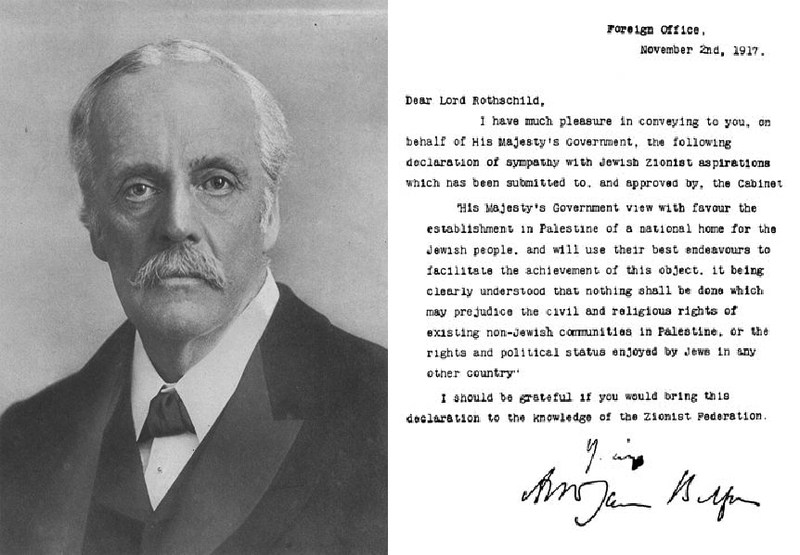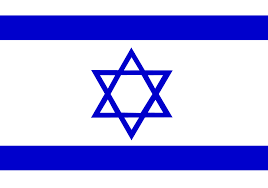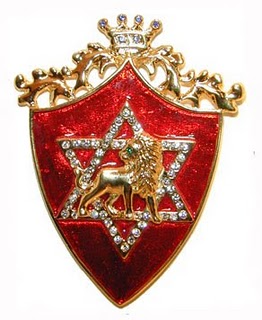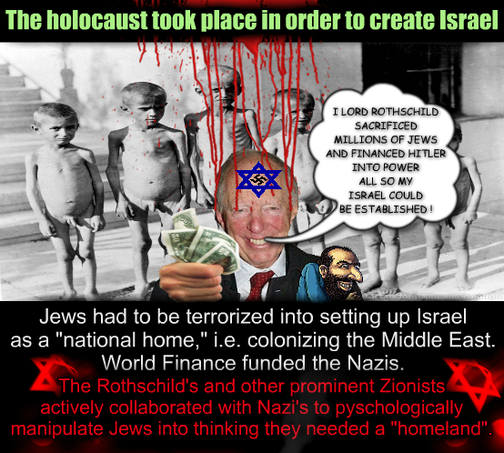Establishing The Zionist State of Israel
BY LMR
Related Articles: Protocols of the Learned Elders of Zion, The Rothschild Family, Rothschild/Zionism, The Illuminati, Genocide, Genocide in Palestine
A (very) Brief history of Zionism – Read the full Zionism Article here
In 1896, Theodor Herzl, a Jewish journalist living in Austria-Hungary, published Der Judenstaat (“The Jews’ State” or “The State of the Jews”), in which he asserted that the only solution to the “Jewish Question” in Europe, including growing antisemitism, was through the establishment of a state for the Jews… Political Zionism had just been born. A year later, Herzl founded the Zionist Organization, which at its first congress, “called for the establishment of a home for the Jewish people in Palestine secured under public law”.
Although initially one of several Jewish political movements offering alternative responses to assimilation and antisemitism, Zionism grew rapidly and became the dominant force in Jewish politics with the destruction of Jewish life in Central and Eastern Europe where these alternative movements were rooted.
“It is essential that the suffering of Jews… becomes worse… this will assist in (the) realization of our plans… I have an excellent idea… I shall induce anti-semites to liquidate Jewish wealth…. The anti-semites will assist us thereby in that they will strengthen the persecution and oppression of Jews. The anti-semites shall be our best friends.” – Theodor Herzl
In 1920, other Zionists voiced similar ideas, including Nahum Goldmann, later president of the World Zionist Organization and World Jewish Congress head. Israel’s first president, Chaim Weizman, said Germany had “too many Jews”. In 1921, Jacob Klatzkin called for German Jews to undermine Jewish communities as a way to acquire a future state.
Establishing The Jewish Home land in Palestine (Israel)
In 1904 Chaim Weizmann, a Chemistry lecturer at the University of Manchester met with Arthur Balfour during one of his electoral campaigns, at the time Balfour was the Conservative MP representing the district and also the Prime Minister. Chaim Weizmann soon became a leader among British Zionists and an Israeli statesman who served as President of the Zionist Organization twice. In 1910 he became a British citizen, and held his British nationality until 1948, when he renounced it to assume his position as the first President of Israel. Later his nephew Ezer Weizman also became president of Israel, its not what you know…
Balfour supported the concept of a Jewish homeland, but felt that there would be more support among politicians for the then-current offer in Uganda, called the British Uganda Programme. Following mainstream Zionist rejection of that proposal, Weizmann was credited later with persuading Balfour for British support to establish a Jewish homeland in Palestine, the original Zionist aspiration. In 1917 when Weizmann was serving his second term as president of the Zionist Organisation, Balfour sent a crucial letter to Walter Rothschild which outlined Britain was in favour of a homeland for Jews in Palestine.
The Balfour Declaration
The Balfour Declaration (dated 2 November 1917) was a letter from the United Kingdom’s then Foreign Secretary Arthur James Balfour to Baron Rothschild (Walter Rothschild, 2nd Baron Rothschild), a leader of the British Jewish community, for transmission to the Zionist Federation of Great Britain and Ireland.

“His Majesty’s government view with favour the establishment in Palestine of a national home for the Jewish people, and will use their best endeavours to facilitate the achievement of this object, it being clearly understood that nothing shall be done which may prejudice the civil and religious rights of existing non-Jewish communities in Palestine, or the rights and political status enjoyed by Jews in any other country.”
James Gelvin, a Middle East history professor, cites at least three reasons for why the British government chose to support Zionist aspirations. Issuing the Balfour Declaration would appeal to Woodrow Wilson’s two closest advisors, who were avid Zionists.
“The British did not know quite what to make of (US) President Woodrow Wilson and his conviction that the way to end hostilities was for both sides to accept “peace without victory.” Two of Wilson’s closest advisors, Louis Brandeis and Felix Frankfurter, were avid Zionists. How better to shore up an uncertain ally than by endorsing Zionist aims? The British adopted similar thinking when it came to the Russians, who were in the midst of their revolution. Several of the most prominent revolutionaries, including Leon Trotsky, were of Jewish descent. Why not see if they could be persuaded to keep Russia in the war by appealing to their latent Jewishness and giving them another reason to continue the fight? …These include not only those already mentioned but also Britain’s desire to attract Jewish financial resources.”
David Lloyd George, who was Prime Minister at the time of the Balfour Declaration, told the Palestine Royal Commission in 1937 that the Declaration was made “due to propagandist reasons”. Citing the position of the Allied and Associated Powers in the ongoing war, Lloyd George said that (in the Report’s words) “In this critical situation it was believed that Jewish sympathy or the reverse would make a substantial difference one way or the other to the Allied cause. In particular Jewish sympathy would confirm the support of American Jewry, and would make it more difficult for Germany to reduce her military commitments and improve her economic position on the eastern front.” Lloyd George then said
“The Zionist leaders gave us a definite promise that, if the Allies committed themselves to giving facilities for the establishment of a national home for the Jews in Palestine, they would do their best to rally Jewish sentiment and support throughout the world to the Allied cause. They kept their word.”
Regarding the intended future of Palestine, Lloyd George testified:
“The idea was, and this was the interpretation put upon it at the time, that a Jewish State was not to be set up immediately by the Peace Treaty without reference to the wishes of the majority of the inhabitants. On the other hand, it was contemplated that when the time arrived for according representative institutions to Palestine, if the Jews had meanwhile responded to the opportunity afforded them by the idea of a national home and had become a definite majority of the inhabitants, then PaIestine would thus become a Jewish Commonwealth.”
In his Memoirs, published in 1939, Lloyd George further elucidated his position:
“The Balfour Declaration represented the convinced policy of all parties in our country and also in America, but the launching of it in 1917 was due, as I have said, to propagandist reasons… The Zionist Movement was exceptionally strong in Russia and America… It was believed, also, that such a declaration would have a potent influence upon world Jewry outside Russia, and secure for the Entente the aid of Jewish financial interests. In America, their aid in this respect would have a special value when the Allies had almost exhausted the gold and marketable securities available for American purchases. Such were the chief considerations which, in 1917, impelled the British Government towards making a contract with Jewry.”
The “Balfour Declaration” was incorporated into the Sèvres peace treaty with the Ottoman Empire and the Mandate for Palestine.
The Doctrine of the Fourteen Points
As the warring armies of Europe neared complete exhaustion, President Woodrow Wilson, in January 1918, enunciated what was called the doctrine of the Fourteen Points. These were 14 statements upon which the world after the war should be constructed. Britain and France, which had done most of the fighting and a great deal of the bleeding, resented Wilson’s proposal. They also resented many of the Fourteen Points themselves. For instance, one of the Fourteen Points had to do, in effect, with the abolition of colonialism. Even though, idealistically, it sounds like a good idea to end all empires, realistically it was deeply resented by the colonial powers. One of the things that the war was about was the struggle for empire. England was not about to dismantle the British Empire; and neither was France about to give up its colonies.
What they understood by the abolition of colonies was the abolition of German colonies; that those colonies should become British and French (which is what happened). However, what Wilson meant was no colonial empires at all. Despite opposition, the Fourteen Points struck a responsive chord among the masses in colonial lands worldwide. They suddenly had hopes that they were now going to get their independence. When the post-war world would prove unable and unwilling to grant its wishes revolutions broke out, the repercussions of which are still echoing today.
Another of the Fourteen Points, the one that the Jewish people were most interested in, was a reference to the fact that ethnic minorities would have a right to independence and self-government. The Jews read it as an endorsement of the Balfour Declaration, which promised a Jewish national home in Palestine. Although a less-than-resounding endorsement, this was one of the reasons that Jews were nevertheless strong backers of the Fourteen Points.
Wilson had publicised his Fourteen Points during the war, and the Germans would have been well advised to accept them. However, they did not. They were bringing their army from the eastern front to the western one to mount a last ditch final offensive. After the offensive failed in October 1918, the Kaiser abdicated and the German government that took over sent a message to President Woodrow Wilson that they accepted the Fourteen Points, and wanted an armistice based on them. They intentionally directed their message to Wilson, not the leadership in France and England. Wilson wrote back to Germany that he would propose the matter to the Allies. He did so, but they never answered.
Finally, as the war turned very severely against the German army the Germans proposed an armistice, this time directly to the French. When this armistice came to be on November 11, 1918 written into the agreement was a vague statement that the Fourteen Points would govern the peace treaty that would later be signed. But it was a document subject to many interpretations and it certainly was not binding. However, the German army was in no condition to hold out and demand more than just this vague reference.
The Treaty of Versailles
The Treaty of Versailles of 1919 is the peace treaty created as a result of six months of negotiations at the Paris Peace Conference of 1919, which put an official end to World War I between the Allies and Central Powers. The treaty was a follow-up to the armistice signed months before in the forest of Compiègne, which put an end to the fighting. A meeting was convened in the French palace at Versailles in January 1919 for the ‘peace’ treaty. However, the Allies met by themselves without Germany present.
The American President, Woodrow Wilson, was “advised” at Versailles Conference by Bernard Baruch; The British Prime Minister, Lloyd George, was “advised” by Alfred Milner, Rothschild employee, and Sir Phillip Sassoon, a direct descendent of Mayer Amschel Rothschild; The French leader, Georges Clemenceau, was “advised” by his Minister for the Interior, Georges Mandel, whose real name was Jeroboam Rothschild; Interestingly all the advisers were Jews mostly representing International Bankers.
Wilson would suffer a stroke while at Versailles, one from which he would never recover. His stroke also had a fateful effect upon world history, because he was not able to campaign for his ideas or impose his will. In the end, the United States withdrew from the matter and entered a period of isolation from Europe. In the retrospect of history, the United States could have made the difference – economically, militarily and diplomatically, in restoring a stable Europe.
Instead the treaty required that Germany claim full responsibility for causing the war, and pay massive war reparations to the allies. Germany also lost territory to many surrounding countries, had its military forces severely limited and was stripped of its overseas and African colonies. Representatives of the new German government, the Weimar Republic, were forced by the victors to sign the treaty, otherwise fighting was threatened to resume. Thus Germany’s foreign minister, Hermann Müller, undersigned it on June 28, 1919. The treaty was ratified by the League of Nations on January 10, 1920. In Germany the treaty caused a shock, often referred to as anti-Versailles-complex, which eventually, as designed, contributed to the collapse of the Weimar Republic in 1933, and thus Adolf Hitler’s rise to power.
The British Mandate for Palestine
The Treaty of Versailles established the League of Nations, which was the precursor of the United Nations. Basically, it was meant to be a Parliament of all the sovereign nations of the world. They would get together and settle all matters by debate, arbitration, etc. Sounds wonderful in theory but it was always just another tip toe towards a totalitarian world government, with centralized political power, a world army and a world bank.
The British Mandate for Palestine, or simply the Mandate for Palestine, was a legal commission for the administration of the territory that had formerly constituted the Ottoman Empire sanjaks of Nablus, Acre, the Southern portion of the Beirut Vilayet, and the Mutasarrifate of Jerusalem, prior to the Armistice of Mudros. – The Armistice of Mudros ended the hostilities in the Middle Eastern theatre between the Ottoman Empire and the Allies of World War I on 31 October 1918.
The Mandate of Palestine was drafted by Professor Felix Frankfurter, the eminent American Zionist, who later became Chief Adviser to President Roosevelt – He was assisted by the Right Honourable Sir Herbert Samuel, Dr. Jacobson, Dr. Fiewel, Mr. Sacher, Mr. Landman, Mr. Ben Cohen, and Mr. Lucien Wolfe who exercised tremendous influence over David Lloyd George. The draft of the Mandate was formally confirmed by the Council of the League of Nations on 24 July 1922, supplemented via the 16 September 1922 Transjordan memorandum and then came into effect on 29 September 1923 following the ratification of the Treaty of Lausanne. The mandate ended at midnight on 14 May 1948. The document was based on the principles contained in Article 22 of the draft Covenant of the League of Nations and the San Remo Resolution of 25 April 1920, by the principal Allied and associated powers after the First World War. The mandate formalised British rule in the southern part of Ottoman Syria from 1923–1948.
The formal objective of the League of Nations Mandate system was to administer parts of the defunct Ottoman Empire, which had been in control of the Middle East since the 16th century, “until such time as they are able to stand alone.” The mandate document formalised the creation of two British protectorates:
- Palestine, to include a national home for the Jewish people, under direct British rule, and
- Transjordan, an Emirate governed semi-autonomously from Britain, under the rule of the Hashemite family.
The State of Israel / Rothschild / Zion
The end of the British Mandate for Palestine was set for midnight on 14 May 1948. That day, David Ben-Gurion, the Executive Head of the Zionist Organization and president of the Jewish Agency for Palestine, declared “the establishment of a Jewish state in Eretz Israel, to be known as the State of Israel,” which would start to function from the termination of the mandate. Upon independence in 1948, the country formally adopted the name “State of Israel” after other proposed historical and religious names including Eretz Israel, Zion, and Judea, were considered and rejected.
Bribing Harry Truman with $2m for his campaign train helped the Rothschild family ensure Israel was recognized as a sovereign state, Truman was the first to do this, and with the support of the US, others inevitably followed suit.

Despite opposition from dissenting Jews who believed the ‘Menorah’, the oldest Jewish symbol should be used to decorate their flag; it is instead a blue hexagram, which is not even a Jewish symbol, it is the Rothschild Family symbol (below). Read the Rothschild Family article here.

It is also an esoteric symbol used to represent Satan, this is also no coicidence. See my article The Illuminati for more.


Related Articles: The Rothschild Family, Rothschild/Zionism, The Illuminati, Genocide, Genocide in Palestine

